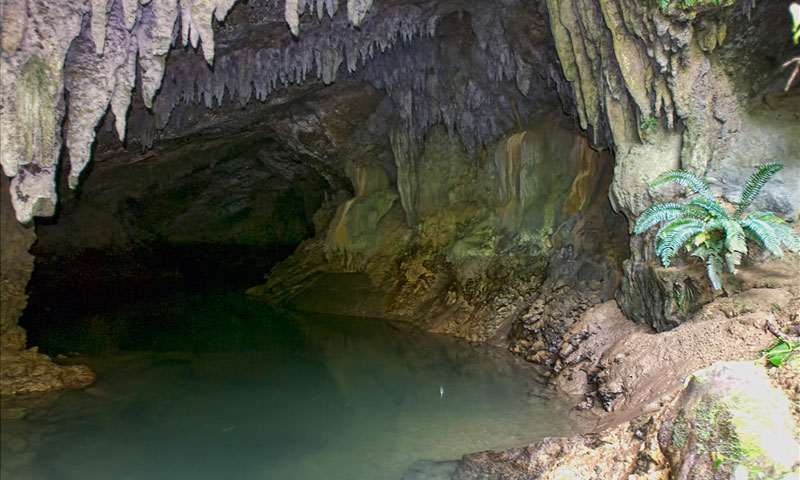Organised by the IRD, the Indonesian Ministry of Maritime Affairs and Fisheries (KKP), the Indonesian Institute of Sciences (LIPI), in partnership with the Caracol association and the CENOTE engineering firm, the LENGGURU-KAIMANA 2010 expedition, conducted between 3 October and 19 November 2010, was the first phase of an interdisciplinary and multi-disciplinary project aiming at understanding the evolutionary dynamic of the Lengguru mountains and their structuring role on biodiversity.
Combining archaeology, geology, biology, palaeontology, and karstology, this exploration required significant logistics: a thirty-metre ship from APSOR served as base camp for the forty members of the team; the research zones were reached by travelling up the major watercourses using inflatable rafts; lastly speleology and underground diving were necessary to reach caves and subterranean rivers.

Multi-disciplinary discoveries
The scientists first identified at least fifteen new species of fish, including rainbow fish, gobies, and a de-pigmented cave-dwelling species with no eyes. New species of mammals, insects, and amphibians (in particular a frog that carries its offspring on its back) were also discovered. Attesting to the extreme biological wealth of the site, these discoveries were presented in many publications in 2011 and 2102.
In parallel, archaeologists discovered several sites with cave paintings and sculptures never before described in Papua. These discoveries appear to confirm one hypothesis of the researchers on the exploration: the Lengguru mountains were the site of significant migrations between Australia and Asia during major human population movements over the past 40,000 years. Lastly, geologists noted original erosion phenomena in the karsts.

